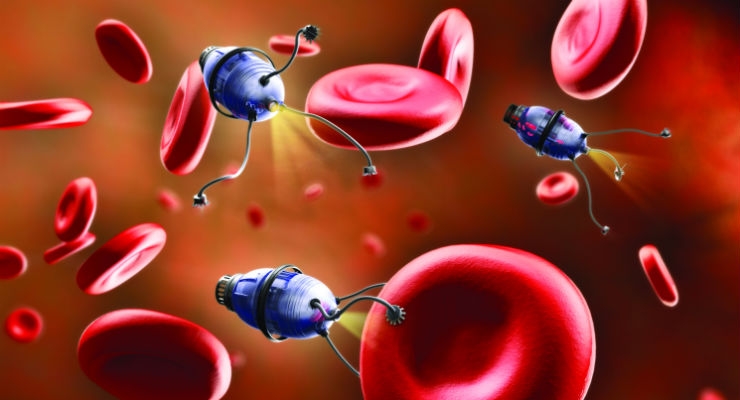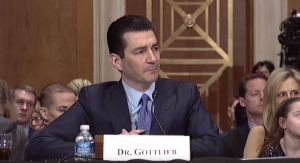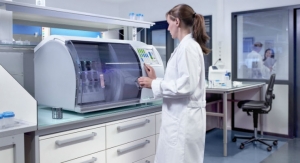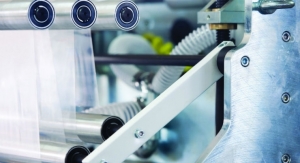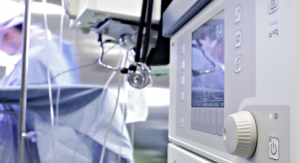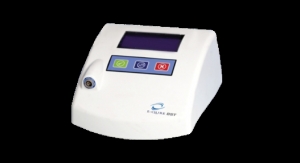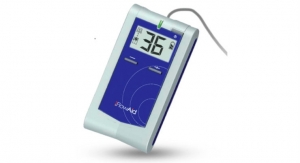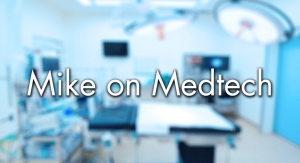Matthew M. Lowe, Executive Vice President, MasterControl03.07.17
The 21st Century Cures Act addresses a wide range of healthcare issues, from opioid-abuse prevention to the need for interoperability of electronic health records. Some of the biggest criticisms of the law, however, focused on provisions intended to accelerate the approval of medical products by the U.S. Food and Drug Administration (FDA).
When it comes to FDA approval processes, the situation is a classic Catch-22. The public wants cheaper medical products sooner. Yet critics sounded the alarm bells when the legislation—which promises a faster approval process that could potentially lower development costs—was signed into law in December 2016.
Some of the most spirited arguments against the law center on four provisions1 designed to streamline the drug and medical device development and approval processes. These provisions are also the most commonly misunderstood. The first two are specifically targeted toward the medical device sector.
#1 Section 3051: Breakthrough Devices
The new law allows the FDA to prioritize approval of medical devices that represent breakthrough technologies. The agency is required to create a guidance that will identify the criteria and the processes for devices designated for expedited development and priority review.
Misperception: Some people think this creates overly broad standards and sets the bar too low for what are considered “breakthrough” devices. They are afraid this provision might pressure the FDA to hasten the approval process, which could result in poor decisions and less-than-safe devices.
In fact, this provision will increase the efficiency of the process for reviewing devices for life-threatening diseases or irreversibly debilitating conditions—when there are no other device alternatives.
First, medtech firms are aware that for their products to qualify as breakthrough devices, they must offer substantial advantages over any existing or similar devices. Critics ought to realize that providing such proof is a heavy burden, making it unlikely for manufacturers to apply for priority review willy-nilly.
Second, critics should realize that a similar process already exists and the world hasn’t stopped spinning. Section 3051 simply builds on the FDA’s Expedited Access Pathway (EAP)2 for devices that address “unmet medical needs” of patients suffering life-threatening diseases. The FDA has granted 24 devices access to this innovative program, which marked its first full year of operation in 2016.3
Third, I have always been a huge proponent of giving patients with a terminal condition the choice when it comes to taking on risk with new and developing technologies. Most of these patients have tried everything to no avail, so how can we deny them the hope from potentially breakthrough alternatives? Most of them want to help in accelerating data collection for future patients with the same condition. Ultimately, this means they are taking an active role in their own treatment. If I were in their situation, I know I would want to have a choice.
#2 Section 2058: Least Burdensome Device Review
The 21st Century Cures Act provides that FDA employees involved in the review of premarket submissions for devices should apply the “least burdensome requirements.”
Misperception: Critics think this will divert FDA employee focus away from the safety and efficacy standards of devices, and therefore make the review process less effective.
Pundits outside the life science industry don’t realize that the “least burdensome” requirement has always been in place. It is neither new nor harmful.
“Least burdensome” means the minimum required to show effectiveness, but as medtech veterans know, in practice the situation is much stricter. Medical device firms jump through regulatory hoops that can only be characterized as the opposite of “least burdensome.”
What the new law adds is the requirement that FDA employees be trained properly regarding the meaning and implementation of “least burdensome requirements” and to ensure that they apply the principle consistently. The law calls for a periodic assessment of employee training and requires the FDA ombudsman to conduct an audit to make sure this provision is being followed.
#3 Section 3022: Real World Evidence
Real world evidence (RWE) refers to data regarding usage of a drug from sources other than randomized clinical trials, such as ongoing safety surveillance, observational studies, registries, claims, and patient-centered outcomes research activities.
Misperception: The nonprofit advocacy group Public Citizen4 fears the law will weaken the FDA standards for product approval and lower the bar for the type of evidence needed to comply with post-approval requirements.
In fact, the new law neither mandates the FDA to use RWE nor changes the agency’s gold standard of approval based on randomized clinical trials, which has been in place since 1962.5 It merely allows the use of real world evidence in some cases, which, if combined with post-approval studies, could accelerate the review process.
It’s only common sense to use real world evidence. If you are just going for another indication or an expanded indication, why wouldn’t you leverage data from the therapy that is already out in the market? Why replicate safety data for a therapy already in widespread use? This is costly, a waste of time, and delays a new therapy from reaching the market in a timely manner. What’s truly astonishing is the fact that we haven’t been doing this before. No wonder it costs so much to develop a drug in the United States.
Within two years, the FDA must establish a guidance and a framework for implementing this provision. It must consult with stakeholders, including industry and patient advocacy groups, for the potential use of RWE.
Dr. Robert Califf, former FDA commissioner, points out that randomized clinical trials and real world evidence are not incompatible. “In fact, the use of randomization within the context of clinical practice will constitute a major advance in evidence generation and we are actively encouraging proposals with this combination of randomized trials conducted in real world practice,” said Dr. Califf.3
#4 Section 3031: Summary Level Review
Summary level review refers to “a summary of clinical data that demonstrates the safety and effectiveness of a drug with respect to a qualified indication” to be used to support the approval of a supplemental application. A supplemental application is eligible for review if there is existing data available demonstrating the safety of the drug.
Misperception: Critics think this section, like real world evidence, will dilute FDA standards for approving supplemental new drug applications.
First, when a drug has been approved, it means it has been tested for safety in a healthy patient population. The new law allows the drug manufacturer to leverage that data to obtain another indication for the same drug. It doesn’t make sense to repeat the safety testing, because the data generated will be the same. Repetition only delays getting the new indication to patients and costs millions of dollars that are simply wasted.
Second, this provision doesn’t mean the FDA cannot or will not ask for full data if necessary. The law allows summary level review, but it doesn’t stop the FDA from asking for full data. The term “qualified indication” implies a built-in screening process, because only indications deemed by the FDA as qualified can take advantage of this provision.
The FDA is required to be transparent about its use of this provision. It will post the number of applications reviewed and the average time of review, among other things, on the agency’s website.
Other Misperceptions
Perhaps the biggest misperception is that the aforementioned provisions are new and untried ideas. In fact, they came from the ongoing efforts of the FDA, the life science industry, advocacy groups, and other stakeholders to improve the approval processes. They build on current efforts to include more patient input in the development process. The provision pertaining to “breakthrough devices,” just like the EAP, gives the patient a voice in the FDA’s decision-making process.
It took two years and more than 900 pages to finalize the 21st Century Cures Act. It is estimated to cost $6.3 billion upon implementation. It is far from perfect. There is a lot more that the government and the industry must do to accelerate product approval and support medical innovation.
At the same time, we have to appreciate the law’s ambition and scope, and the great effort in gathering input from stakeholders through the numerous hearings. Most of all, we should appreciate the fact that the new law keeps the ball moving forward in terms of the one thing everybody wants—optimizing, streamlining, and accelerating the FDA review and approval processes—in order to deliver the medical products and treatments to patients sooner rather than later.
References
Matthew M. Lowe, executive vice president at MasterControl, is the author of “Convergence of Compliance and Technology: How Technology Has Changed Regulatory Compliance in the Past Decade” (http://bit.ly/mpo031712). He is a mechanical engineer with over a dozen years of medical device experience in product development, product management, and regulatory compliance. He has successfully launched more than a dozen medical devices and has five patents issued. His regulatory compliance experience includes writing a 510(k) that was cleared by the FDA and managing a multisite, multiyear postmarket clinical study for orthopedic devices.
When it comes to FDA approval processes, the situation is a classic Catch-22. The public wants cheaper medical products sooner. Yet critics sounded the alarm bells when the legislation—which promises a faster approval process that could potentially lower development costs—was signed into law in December 2016.
Some of the most spirited arguments against the law center on four provisions1 designed to streamline the drug and medical device development and approval processes. These provisions are also the most commonly misunderstood. The first two are specifically targeted toward the medical device sector.
#1 Section 3051: Breakthrough Devices
The new law allows the FDA to prioritize approval of medical devices that represent breakthrough technologies. The agency is required to create a guidance that will identify the criteria and the processes for devices designated for expedited development and priority review.
Misperception: Some people think this creates overly broad standards and sets the bar too low for what are considered “breakthrough” devices. They are afraid this provision might pressure the FDA to hasten the approval process, which could result in poor decisions and less-than-safe devices.
In fact, this provision will increase the efficiency of the process for reviewing devices for life-threatening diseases or irreversibly debilitating conditions—when there are no other device alternatives.
First, medtech firms are aware that for their products to qualify as breakthrough devices, they must offer substantial advantages over any existing or similar devices. Critics ought to realize that providing such proof is a heavy burden, making it unlikely for manufacturers to apply for priority review willy-nilly.
Second, critics should realize that a similar process already exists and the world hasn’t stopped spinning. Section 3051 simply builds on the FDA’s Expedited Access Pathway (EAP)2 for devices that address “unmet medical needs” of patients suffering life-threatening diseases. The FDA has granted 24 devices access to this innovative program, which marked its first full year of operation in 2016.3
Third, I have always been a huge proponent of giving patients with a terminal condition the choice when it comes to taking on risk with new and developing technologies. Most of these patients have tried everything to no avail, so how can we deny them the hope from potentially breakthrough alternatives? Most of them want to help in accelerating data collection for future patients with the same condition. Ultimately, this means they are taking an active role in their own treatment. If I were in their situation, I know I would want to have a choice.
#2 Section 2058: Least Burdensome Device Review
The 21st Century Cures Act provides that FDA employees involved in the review of premarket submissions for devices should apply the “least burdensome requirements.”
Misperception: Critics think this will divert FDA employee focus away from the safety and efficacy standards of devices, and therefore make the review process less effective.
Pundits outside the life science industry don’t realize that the “least burdensome” requirement has always been in place. It is neither new nor harmful.
“Least burdensome” means the minimum required to show effectiveness, but as medtech veterans know, in practice the situation is much stricter. Medical device firms jump through regulatory hoops that can only be characterized as the opposite of “least burdensome.”
What the new law adds is the requirement that FDA employees be trained properly regarding the meaning and implementation of “least burdensome requirements” and to ensure that they apply the principle consistently. The law calls for a periodic assessment of employee training and requires the FDA ombudsman to conduct an audit to make sure this provision is being followed.
#3 Section 3022: Real World Evidence
Real world evidence (RWE) refers to data regarding usage of a drug from sources other than randomized clinical trials, such as ongoing safety surveillance, observational studies, registries, claims, and patient-centered outcomes research activities.
Misperception: The nonprofit advocacy group Public Citizen4 fears the law will weaken the FDA standards for product approval and lower the bar for the type of evidence needed to comply with post-approval requirements.
In fact, the new law neither mandates the FDA to use RWE nor changes the agency’s gold standard of approval based on randomized clinical trials, which has been in place since 1962.5 It merely allows the use of real world evidence in some cases, which, if combined with post-approval studies, could accelerate the review process.
It’s only common sense to use real world evidence. If you are just going for another indication or an expanded indication, why wouldn’t you leverage data from the therapy that is already out in the market? Why replicate safety data for a therapy already in widespread use? This is costly, a waste of time, and delays a new therapy from reaching the market in a timely manner. What’s truly astonishing is the fact that we haven’t been doing this before. No wonder it costs so much to develop a drug in the United States.
Within two years, the FDA must establish a guidance and a framework for implementing this provision. It must consult with stakeholders, including industry and patient advocacy groups, for the potential use of RWE.
Dr. Robert Califf, former FDA commissioner, points out that randomized clinical trials and real world evidence are not incompatible. “In fact, the use of randomization within the context of clinical practice will constitute a major advance in evidence generation and we are actively encouraging proposals with this combination of randomized trials conducted in real world practice,” said Dr. Califf.3
#4 Section 3031: Summary Level Review
Summary level review refers to “a summary of clinical data that demonstrates the safety and effectiveness of a drug with respect to a qualified indication” to be used to support the approval of a supplemental application. A supplemental application is eligible for review if there is existing data available demonstrating the safety of the drug.
Misperception: Critics think this section, like real world evidence, will dilute FDA standards for approving supplemental new drug applications.
First, when a drug has been approved, it means it has been tested for safety in a healthy patient population. The new law allows the drug manufacturer to leverage that data to obtain another indication for the same drug. It doesn’t make sense to repeat the safety testing, because the data generated will be the same. Repetition only delays getting the new indication to patients and costs millions of dollars that are simply wasted.
Second, this provision doesn’t mean the FDA cannot or will not ask for full data if necessary. The law allows summary level review, but it doesn’t stop the FDA from asking for full data. The term “qualified indication” implies a built-in screening process, because only indications deemed by the FDA as qualified can take advantage of this provision.
The FDA is required to be transparent about its use of this provision. It will post the number of applications reviewed and the average time of review, among other things, on the agency’s website.
Other Misperceptions
Perhaps the biggest misperception is that the aforementioned provisions are new and untried ideas. In fact, they came from the ongoing efforts of the FDA, the life science industry, advocacy groups, and other stakeholders to improve the approval processes. They build on current efforts to include more patient input in the development process. The provision pertaining to “breakthrough devices,” just like the EAP, gives the patient a voice in the FDA’s decision-making process.
It took two years and more than 900 pages to finalize the 21st Century Cures Act. It is estimated to cost $6.3 billion upon implementation. It is far from perfect. There is a lot more that the government and the industry must do to accelerate product approval and support medical innovation.
At the same time, we have to appreciate the law’s ambition and scope, and the great effort in gathering input from stakeholders through the numerous hearings. Most of all, we should appreciate the fact that the new law keeps the ball moving forward in terms of the one thing everybody wants—optimizing, streamlining, and accelerating the FDA review and approval processes—in order to deliver the medical products and treatments to patients sooner rather than later.
References
- 21st Century Cures Act: http://bit.ly/21curesact.
- FDA’s Expedited Access Pathway Program: http://bit.ly/fdaeapp.
- “21st Century Cures Act: Making Progress on Shared Goals for Patients,” by FDA Commissioner Robert M. Califf, FDA Voice Blog, Dec. 13, 2016. http://bit.ly/mpo031710.
- From Public Citizen’s website: http://bit.ly/mpo031711.
- The 1962 Drug Amendments (also known as Kefauver-Harris Amendments), which included GMP requirements, required manufacturers to prove that their products are safe before selling them. The law toughened up FDA inspections and required the reporting of adverse side effects.
Matthew M. Lowe, executive vice president at MasterControl, is the author of “Convergence of Compliance and Technology: How Technology Has Changed Regulatory Compliance in the Past Decade” (http://bit.ly/mpo031712). He is a mechanical engineer with over a dozen years of medical device experience in product development, product management, and regulatory compliance. He has successfully launched more than a dozen medical devices and has five patents issued. His regulatory compliance experience includes writing a 510(k) that was cleared by the FDA and managing a multisite, multiyear postmarket clinical study for orthopedic devices.

